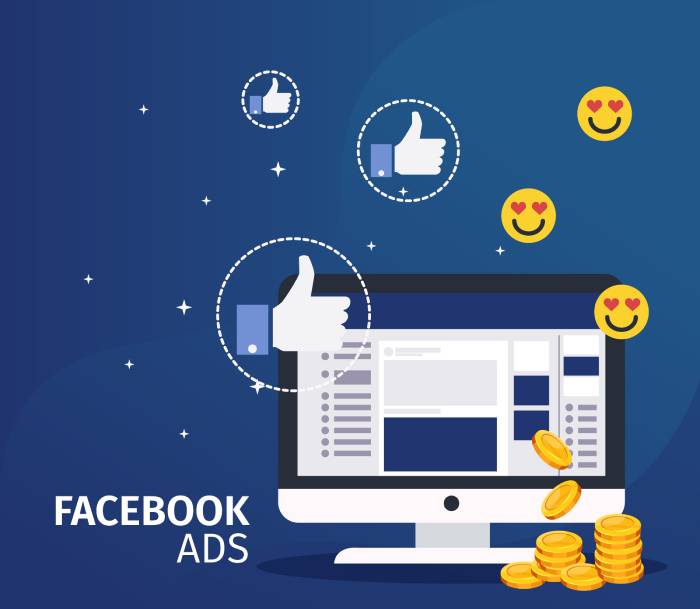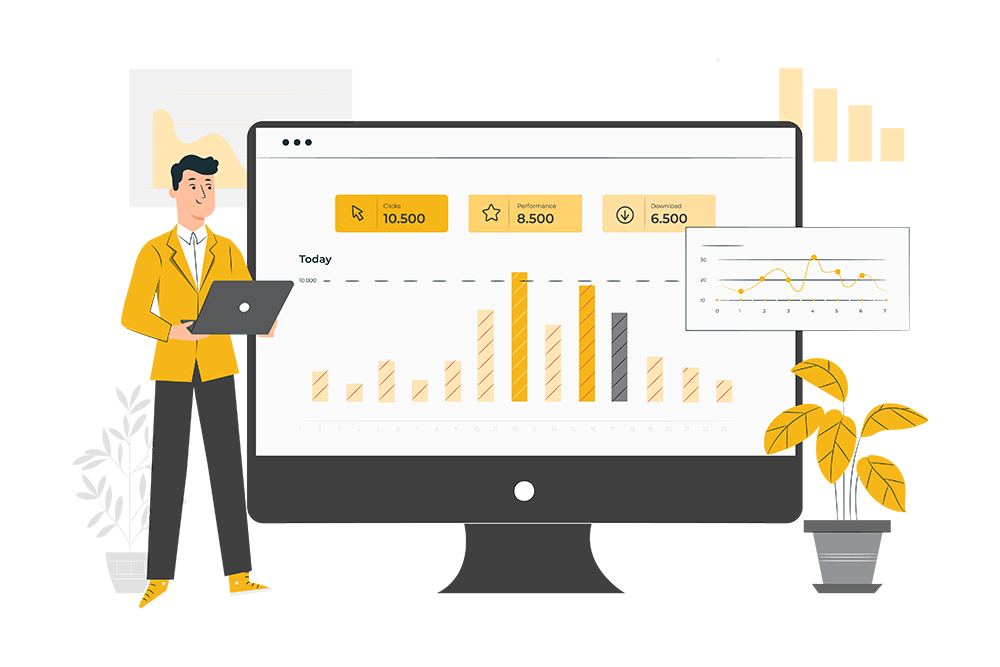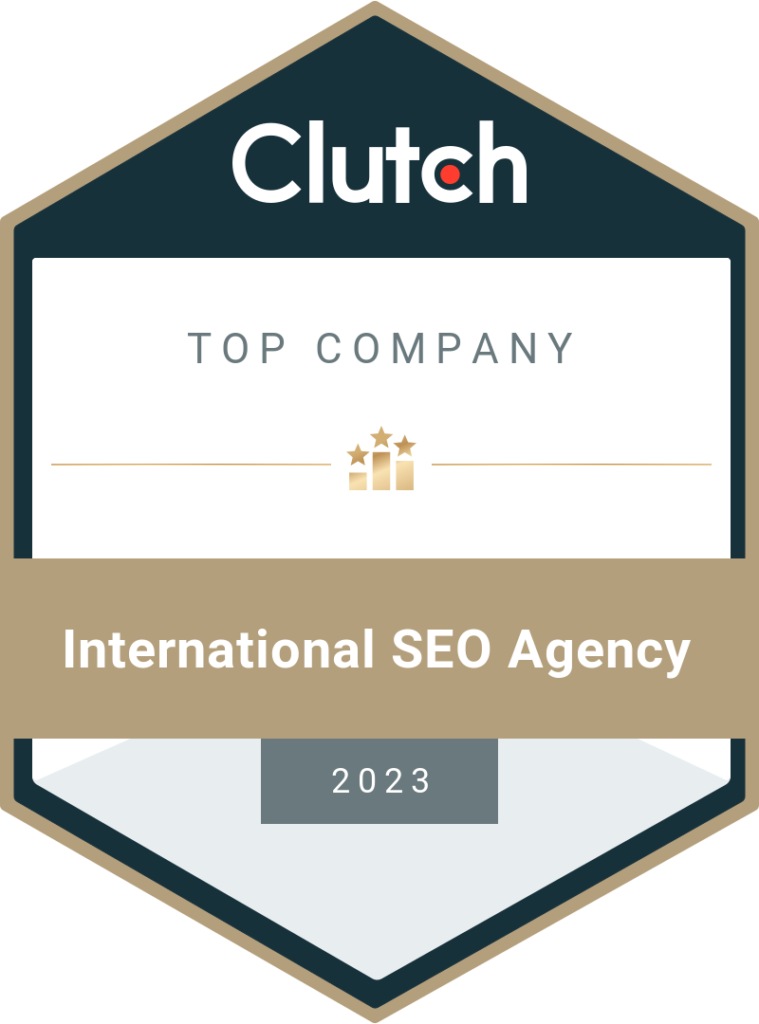Facebook app install ads have become an essential marketing tool for businesses looking to promote their mobile apps. With millions of active users on Facebook, the social media giant has created a lucrative marketing channel for app developers. Today, businesses are investing heavily in Facebook app install ads campaigns to drive installs and increase user engagement.
However, creating a successful Facebook app install ads campaign requires more than just throwing money at it. Companies need to develop effective strategies and practices that can help them reach their target audience and maximize their ad spend. In this article, we will explore some of the best strategies and practices for running a successful Facebook app install ads campaign.
Table of Contents
The importance of Facebook ads for app install

Effective marketing strategy for mobile applications.
Here are some key reasons why Facebook ads are important for app installs:
- Wide Reach: Facebook has an enormous user base, with billions of active users worldwide. This extensive reach allows app developers to target a vast audience and maximize their chances of reaching potential users who may be interested in their app.
- Targeted Advertising: Facebook provides powerful targeting options based on demographics, interests, behaviors, and more. This level of precision allows app developers to reach specific segments of the audience that are most likely to be interested in their app, increasing the probability of app installs.
- Customizable Campaigns: Facebook’s ad platform provides a variety of customizable campaign options. App developers can choose from different ad formats (such as carousel, video, or single image ads), create compelling ad creatives, and optimize their campaigns based on specific goals (such as maximizing installs or increasing engagement).
- App Install Ads: Facebook offers app install ads, which are specifically designed to drive installations of mobile applications. These ads typically include a call-to-action button that directs users to download the app directly from the app store. By leveraging app install ads, developers can streamline the user acquisition process and encourage more people to install their app.
- Tracking and Measurement: Facebook’s advertising platform provides robust tracking and measurement capabilities. App developers can track key performance metrics such as the number of installs, cost per install, and user engagement within the app. This data enables developers to evaluate the effectiveness of their campaigns, make data-driven optimizations, and refine their targeting strategies.
- Retargeting Opportunities: Facebook allows for retargeting, which means you can reach out to users who have already interacted with your app or website. This is particularly valuable for app install campaigns as it helps to re-engage users who may have shown initial interest but did not install the app. By reminding them of the app’s benefits, you can increase the likelihood of conversion.
- App Analytics Integration: Facebook ads can be integrated with various mobile app analytics tools, such as Facebook Analytics or third-party platforms. This integration enables app developers to gain deeper insights into user behavior, app usage patterns, and the overall performance of their app, helping them refine their marketing strategies and improve user acquisition efforts.
Facebook ads offer app developers a powerful platform to reach a wide and targeted audience, drive app installs, and measure campaign performance. Leveraging Facebook’s extensive reach, advanced targeting options, customizable campaigns, and robust tracking capabilities can significantly enhance an app’s visibility, user acquisition, and overall success.
Understanding your target audience in Facebook App Install Ads

Understanding your target audience is essential when running Facebook app install ads. By knowing your audience well, you can create more targeted and relevant ads, which increases the chances of attracting the right users to install your app.
Here are some key steps to understand your target audience for Facebook app install ads:
- Define your app’s value proposition: Start by understanding the unique features, benefits, and value your app offers to users. Determine the core problem your app solves or the specific needs it addresses. This will help you identify the primary audience who will benefit the most from using your app.
- Analyze existing users: If you already have users for your app, analyze their demographics, interests, and behaviors. Facebook’s App Analytics or other app analytics tools can provide insights into user demographics, user engagement, and user retention. Identify common characteristics among your existing users to develop a profile of your ideal audience.
- Conduct market research: Conduct market research to gain insights into your target audience’s preferences, behaviors, and motivations. Look for data related to your app’s niche, similar apps, and competitors. Explore industry reports, surveys, social media discussions, or conduct user interviews to gather valuable information.
- Utilize Facebook Audience Insights: Facebook’s Audience Insights tool provides valuable information about Facebook users, including demographics, interests, and behaviors. Utilize this tool to gain insights into the broader Facebook user base that aligns with your app’s target audience. Refine your audience criteria based on this data.
- Create user personas: User personas are fictional representations of your ideal users based on demographic information, interests, and behaviors. Develop detailed user personas that describe your target audience’s characteristics, motivations, challenges, and goals. This will help you visualize and understand your audience better.
- Leverage Facebook targeting options: Utilize Facebook’s targeting options to refine your audience. Consider factors like age, gender, location, language, interests, behaviors, and connections. Targeting options can be customized to narrow down your audience and reach users who are most likely to be interested in your app.
- Test and iterate: Launch your Facebook app install ads with the defined target audience and closely monitor the results. Track key metrics such as click-through rates, app installs, and user engagement. Analyze the data and iterate your targeting strategy based on the insights gained. Continuously optimize your ads to improve their performance and reach the right users effectively.
Remember that understanding your target audience is an ongoing process. As you gather more data and insights from your ad campaigns, continue refining your audience targeting to maximize the effectiveness of your Facebook app install ads.
Demographics, interests and behaviors in Facebook App Install Ads
Demographics, interests, and behaviors are key targeting parameters in Facebook app install ads. By utilizing these parameters effectively, you can refine your audience and reach the right users who are most likely to install your app.
Here’s an overview of each of these targeting options:
- Demographics: Facebook allows you to target users based on various demographic factors, including:
- Age: Specify the age range of your target audience.
- Gender: Target users of a specific gender or choose to target all genders.
- Location: Target users based on their location, whether it’s a specific country, city, or radius around a location.
- Language: Target users who speak a particular language.
Utilizing demographic targeting helps narrow down your audience and focus on users who are more likely to be interested in your app based on their basic characteristics.
- Interests: Facebook provides targeting options based on users’ interests, which can include their hobbies, activities, pages they like, and topics they engage with. This option allows you to reach users who have expressed an interest in topics relevant to your app. For example, if your app is a fitness tracking app, you can target users who are interested in fitness, exercise, or healthy living.
- Behaviors: Facebook allows targeting based on user behaviors, which include activities users engage in on and off Facebook. Behaviors include purchase behaviors, device usage, travel behavior, and more. For example, you can target users who frequently make in-app purchases, users who have recently purchased a smartphone, or users who frequently travel.
Behavior targeting allows you to reach users based on their specific actions or habits, providing a more focused approach to finding users who are more likely to install and engage with your app.
It’s important to note that you can combine these targeting options to create more refined audiences. For example, you can target women aged 25-34, located in a specific city, who have an interest in fashion.
When setting up your Facebook app install ads, consider experimenting with different combinations of demographics, interests, and behaviors to find the most effective audience for your app. Additionally, regularly review and analyze the performance of your ads to optimize your targeting strategy and improve your app install rates.
Setting up your Facebook App Install ad campaign
To create a Facebook app install campaign, follow these steps:
Set up a Facebook Developer Account: If you don’t have one already, create a Facebook Developer account by visiting the Facebook for Developers website (https://developers.facebook.com/). This account is required to manage your app and access the necessary tools for app installation campaigns.
Create a Facebook App: Within your Facebook Developer account, navigate to the “My Apps” section and click on “Create App” to start creating a new app. Follow the prompts and provide the necessary information, such as the app name, platform (iOS, Android, etc.), and other relevant details.
Configure App Settings: Once your app is created, configure the app settings, including platform-specific settings like package name or bundle ID for iOS and Android apps. Ensure that you have properly set up any necessary app integrations, such as Facebook Login or app analytics tools.
Set Up Facebook App Install Campaign: Open Facebook Ads Manager (https://www.facebook.com/adsmanager/) and click on “Create” to start creating a new ad campaign. Select the campaign objective as “App Installs” or “App Engagement” depending on your goals.
Define Campaign Settings: Provide a name for your campaign and select the appropriate ad account and conversion event. Set your campaign budget and choose the desired optimization goal, such as app installs or cost per install (CPI).
Define Target Audience: Specify your target audience based on demographics, interests, behaviors, and other relevant criteria. You can also utilize Facebook’s advanced targeting options, including custom audiences or lookalike audiences, to reach specific user segments.
Choose Ad Format and Creatives: Select the ad format that best suits your campaign goals, such as single image ads, video ads, carousel ads, or collection ads. Create compelling ad creatives, including eye-catching visuals, persuasive ad copy, and a clear call-to-action (CTA) to encourage app installs.
Set Ad Placement: Choose the placements where you want your ads to appear. Facebook offers various options, including Facebook Feed, Instagram Feed, Audience Network, and Messenger. Consider your target audience and the nature of your app when selecting placements.
Configure Tracking and Measurement: Set up proper tracking and measurement for your app installs using the Facebook SDK or other mobile app attribution tools. Ensure that the appropriate conversion tracking is implemented to accurately measure the success of your campaign.
Review and Launch: Review your campaign settings, targeting, creatives, and budget to ensure everything is set up correctly. Once you are satisfied, click “Launch” to start running your app install campaign.
After launching your campaign, closely monitor its performance through Facebook Ads Manager. Track key metrics such as app installs, CPI, click-through rate (CTR), and engagement. Use the insights gained
Best Practices for Facebook App Install Ads
Here are some best practices for running Facebook app install ads:
- Clear and Compelling Ad Creative: Create visually appealing and attention-grabbing ad creatives that clearly communicate the value proposition of your app. Use high-quality images or videos, compelling ad copy, and a strong call-to-action (CTA) to encourage users to install your app.
- Test Different Ad Variations: Conduct A/B testing with different ad variations to identify the most effective elements. Test different visuals, headlines, ad copy, CTAs, and formats to find the combinations that generate the highest click-through rates (CTR) and conversion rates.
- Precise Targeting: Refine your target audience to reach users who are most likely to be interested in your app. Leverage Facebook’s extensive targeting options to target specific demographics, interests, behaviors, and lookalike audiences. The more precise your targeting, the better the chances of reaching users who are likely to install and engage with your app.
- Utilize Custom and Lookalike Audiences: Create custom audiences based on your existing app users, website visitors, or engaged users. Use these custom audiences to retarget users who have shown interest but haven’t installed the app. Additionally, build lookalike audiences to find users who share similar characteristics to your existing high-value users.
- Ad Placement Optimization: Experiment with different ad placements to identify the most effective ones for your app install ads. Facebook offers various placements such as the Facebook feed, Instagram feed, Audience Network, and Messenger. Monitor the performance of each placement and allocate your budget accordingly.
- App Store Optimization (ASO): Optimize your app store listing to increase visibility and conversion rates. Use relevant keywords, compelling app descriptions, high-quality screenshots, and positive reviews to attract users and convince them to install your app.
- Deep Linking: Implement deep linking to provide a seamless user experience. Deep links can direct users to specific content or features within your app, improving user engagement and conversion rates. Ensure that deep links are properly set up and tested across different platforms.
- Conversion Tracking and Attribution: Set up proper conversion tracking using the Facebook SDK or mobile app attribution tools. Track app installs and in-app events to measure the effectiveness of your ad campaigns. Implement attribution models to understand the impact of your ads on app installs and user behavior.
- Continuous Monitoring and Optimization: Regularly monitor the performance of your app install ads. Analyze key metrics such as CPI, CTR, conversion rate, and return on ad spend (ROAS). Make data-driven optimizations by adjusting targeting, ad creative, bidding, and budget allocation based on the insights gained.
- Ad Frequency and Creative Refresh: Avoid ad fatigue by regularly refreshing your ad creatives. Continuously test new visuals, ad copy, and formats to keep your ads engaging and relevant. Monitor ad frequency to ensure that your ads are not shown excessively to the same users, which could lead to diminishing returns.
By implementing these best practices, you can increase the effectiveness of your Facebook app install ads and drive more app installations and user engagement. Regularly analyze and optimize your campaigns based on performance data to achieve your app install goals.
Budget, Ad Format and Placement in Facebook App Install Ads

When running a Facebook app install ad campaign, several factors come into play, including budget, ad format, and ad placement.
Here’s an overview of each of these elements:
- Budget: Determining your budget is crucial for your Facebook app install ad campaign. Your budget should align with your campaign goals and overall marketing strategy. Facebook provides flexible budgeting options, allowing you to set a daily or lifetime budget. You can allocate your budget based on your desired reach, estimated cost per install (CPI), or other metrics that are important to your campaign. Start with a budget that allows for meaningful testing and optimization, and adjust it based on the performance and outcomes of your ads.
- Ad Format: Facebook offers various ad formats to showcase your app and encourage installations. Some common ad formats for app install campaigns include:
- Single Image Ads: These ads include a single image along with ad copy and a call-to-action button. Use eye-catching visuals that represent your app’s features or benefits to capture users’ attention.
- Video Ads: Video ads can be highly engaging and effective in conveying your app’s value proposition. Create a short, compelling video that demonstrates your app’s key features and benefits. Consider adding captions or subtitles as many users watch videos with the sound off.
- Carousel Ads: Carousel ads allow you to showcase multiple images or videos within a single ad. This format is useful for highlighting different features of your app or showing a step-by-step process.
- Collection Ads: Collection ads are designed for mobile devices and enable users to browse a collection of images or videos. You can use this format to showcase a range of app features or specific products within your app.
Choose an ad format that best represents your app and captures users’ attention while aligning with your campaign goals.
- Ad Placement: Facebook provides various ad placement options to reach your target audience. The available placements include:
- Facebook Feed: Ads appear directly in users’ News Feeds as they scroll through Facebook. This placement offers high visibility and engagement opportunities.
- Instagram Feed and Stories: Extend your reach by displaying ads within users’ Instagram Feeds or as Stories. Instagram has a visually focused user base, making it suitable for visually appealing app ads.
- Audience Network: Expand your reach beyond Facebook and Instagram by displaying ads on external apps and websites within the Audience Network. This placement can help you reach users across a wide range of mobile apps and websites.
- Messenger: Show ads within Facebook Messenger to target users who are active on the messaging platform. Messenger ads can be displayed in the inbox or as sponsored messages.
Consider your target audience and the nature of your app when selecting ad placements. It’s often beneficial to test different placements and evaluate their performance to determine the most effective ones for your app install campaign.
Remember to regularly monitor your campaign’s performance, track key metrics, and make data-driven optimizations. Adjust your budget, ad formats, and placements based on the insights you gain to improve the effectiveness of your Facebook app install ads.
Optimizing your Facebook App Install Ad Performance

Optimizing the performance of your Facebook app install ads is crucial to drive better results and maximize the return on your advertising investment.
Here are some key strategies to optimize your Facebook app install ad campaign:
- Define clear campaign objectives: Clearly define your campaign objectives and key performance indicators (KPIs) such as app installs, cost per install (CPI), click-through rate (CTR), and in-app actions. These objectives will help guide your optimization efforts and allow you to measure the success of your campaign.
- Test different ad variations: A/B testing is an effective way to optimize your ads. Create multiple ad variations with different visuals, copy, and calls-to-action (CTAs). Test these variations against each other to identify the highest-performing elements. Continuously refine and iterate your ads based on the results to improve their effectiveness.
- Optimize targeting: Regularly review and refine your target audience. Use Facebook’s targeting options to experiment with different demographics, interests, and behaviors. Narrow down your audience to reach users who are most likely to be interested in your app. Analyze the performance of different audience segments and adjust your targeting accordingly.
- Utilize ad scheduling: Analyze the performance of your ads at different times of the day and days of the week. Use ad scheduling to adjust your ads’ delivery based on peak activity and engagement periods. Concentrate your budget and ad delivery during times when your target audience is most active to maximize visibility and engagement.
- Monitor and adjust bids: Keep a close eye on your bids and adjust them based on performance. If you notice that certain ad placements or audience segments are performing better, allocate more budget or increase bids for those specific areas. Similarly, adjust bids for better-performing devices or demographics to optimize your budget allocation.
- Implement conversion tracking and attribution: Utilize Facebook’s conversion tracking tools and set up proper attribution to measure the impact of your ads on app installs and in-app actions. This data will help you understand which ads and targeting strategies are driving the most conversions and enable you to optimize accordingly.
- Leverage retargeting: Implement retargeting strategies to re-engage users who have shown interest in your app but haven’t installed it. Create custom audiences based on app interactions, such as users who have visited your app’s landing page or added items to their cart without completing the installation. Retargeting ads can remind these users of your app’s benefits and encourage them to install.
- Analyze and optimize metrics: Continuously monitor and analyze key metrics such as CPI, CTR, engagement, and retention. Identify trends, patterns, and areas of improvement. Optimize your ads, targeting, and budget allocation based on these insights to drive better results over time.
- Creative refresh: Regularly update your ad creatives to avoid ad fatigue and keep your campaign fresh. Test new visuals, ad copy, or ad formats to maintain users’ interest and engagement with your ads.
Remember, optimization is an ongoing process. Continuously test, analyze, and refine your campaign based on performance data to improve the effectiveness of your Facebook app install ads.
A/B Testing and Tracking Metrics in Facebook App Install Ads
A/B testing and tracking metrics are essential for optimizing the performance of your Facebook app install ads. They provide valuable insights into what works and what doesn’t, allowing you to make data-driven decisions to improve your campaign.
Here’s how you can implement A/B testing and track metrics effectively:
A/B Testing:
- Identify test variables: Determine the elements you want to test in your ads, such as visuals, ad copy, CTAs, targeting options, or ad formats. Focus on one variable at a time to accurately measure its impact on ad performance.
- Create ad variations: Develop multiple versions of your ads, each with a specific variation of the test variable. Ensure that only one element is changed between the ad versions to isolate the impact of that variable.
- Split your audience: Divide your target audience randomly into different groups, with each group exposed to a different ad variation. This ensures a fair comparison between the variations.
- Define a control group: Create a control group that doesn’t receive any ads. This group serves as a baseline against which you can compare the performance of your ad variations.
- Monitor and measure: Launch your ad campaign and closely monitor the performance of each ad variation. Track relevant metrics such as CTR, CPI, conversion rate, or retention rate.
- Analyze results: Compare the performance of your ad variations and determine which one delivers the best results. Consider metrics like install rate, engagement, or cost-effectiveness. Based on the insights gained, select the winning variation or further iterate and test new versions.
Tracking Metrics:
- Install tracking: Integrate the Facebook SDK into your app to accurately track app installs. Ensure that the SDK is properly implemented to capture install data for attribution.
- Set up app events: Define and set up relevant in-app events that you want to track, such as registrations, purchases, or level completions. These events provide insights into user engagement and conversion within your app.
- Implement Facebook pixel: Install the Facebook pixel on your website or landing page to track user interactions outside the app, such as website visits or add-to-cart actions. This enables better retargeting and optimization strategies.
- Use Facebook Ads Manager: Access the Ads Manager platform to track and analyze key metrics related to your ad campaign. Monitor metrics like app installs, CPI, CTR, engagement rate, or revenue generated. Customize your reporting dashboard to focus on the most important metrics for your campaign goals.
- Attribution settings: Set up attribution windows to determine how conversions are attributed to your ads. Facebook offers various attribution models like click-through, view-through, or custom attribution. Understand how different attribution models impact your metrics and adjust them according to your campaign objectives.
- Cohort analysis: Utilize cohort analysis to understand user behavior over time. Track metrics like retention rate, lifetime value, or user engagement based on different cohorts of users. This analysis helps identify patterns and optimize your targeting and messaging strategies.
Regularly analyze and interpret the tracked metrics to gain insights into your campaign’s performance. Make data-driven decisions to optimize your ad creatives, targeting, bidding, and budget allocation based on the metrics that align with your campaign objectives.
Retargeting Strategies in Facebook App Install Ads
Retargeting strategies play a crucial role in driving conversions and increasing app installs in Facebook app install ad campaigns. By re-engaging users who have already shown interest in your app, you can encourage them to complete the installation process.
Here are some effective retargeting strategies you can implement:
- Website/App Visitors: Create a custom audience based on users who have visited your app’s website or landing page but have not installed the app. Retarget them with ads that highlight the key features and benefits of your app, providing an incentive to install.
- Cart Abandoners: If your app involves e-commerce or in-app purchases, target users who have added items to their cart but haven’t completed the purchase. Remind them about the products or services they left behind and create a sense of urgency or offer discounts to encourage them to install and make the purchase.
- Inactive Users: Identify users who have installed your app but have become inactive or haven’t engaged with it for a specific period. Develop retargeting campaigns to re-engage these users, reminding them of the value and benefits of using your app. Highlight new features, updates, or exclusive content to reignite their interest.
- User Segmentation: Segment your existing user base based on their behavior, demographics, or in-app activity. Create custom audiences for each segment and retarget them with personalized ads. For example, you can target users who have completed certain levels or achieved specific milestones, encouraging them to continue using the app or inviting them to try new features.
- Lookalike Audiences: Build lookalike audiences based on your existing high-value users or those who have already installed your app. Facebook’s algorithm will find users who share similar characteristics and behaviors, increasing the likelihood of app installs.
- Dynamic Product Ads: If your app offers a range of products or services, utilize dynamic product ads to retarget users with personalized ads displaying the exact items they viewed or added to their wishlist. This personalized approach can significantly increase conversions and app installs.
- Sequential Messaging: Create a series of retargeting ads with a sequential messaging strategy. Show different ads to users at different stages of the app install process. For example, start with an ad highlighting the key benefits, followed by an ad with social proof or testimonials, and finally, an ad with a limited-time offer or discount to incentivize immediate installation.
Remember to optimize your retargeting campaigns by continuously testing and refining your ad creatives, messaging, and targeting parameters. Regularly monitor the performance of your retargeting efforts and make data-driven adjustments to improve your conversion rates and increase app installs.
Re-engaging users who have shown interest in Facebook App Install Ads
Re-engaging users who have shown interest in your Facebook app install ads is a valuable strategy to encourage them to complete the installation process.
Here are some effective tactics for re-engaging these users:
- Custom Audience: Create a custom audience based on users who have engaged with your app install ads but have not installed the app. This audience can be built from various engagement actions such as ad clicks, video views, or post engagements. Once you have this custom audience, you can retarget them with specific ad campaigns.
- Dynamic Ad Creative: Utilize dynamic ad creatives to show personalized content to users who have shown interest in your app. Dynamically insert the name of the app or specific features they interacted with in the ad copy or visual. This personalization can help reignite their interest and remind them of the value your app offers.
- Incentives and Offers: Provide incentives or exclusive offers to users who have shown interest but haven’t installed the app. Offer discounts, free trials, or special features to encourage them to take the next step. Highlight the benefits they will receive by installing the app, such as time-saving, convenience, or access to premium content.
- Social Proof: Incorporate social proof elements into your ads to build trust and credibility. Showcase positive reviews, ratings, or testimonials from existing users to reassure potential users of the app’s value and quality. Social proof can be influential in persuading users to install the app.
- Deep Linking: Utilize deep linking to provide a seamless user experience and guide users directly to the specific content or feature they were interested in. Deep links can redirect users to relevant landing pages or specific in-app screens, making it easier for them to engage and continue the installation process.
- Retargeting Campaigns: Develop retargeting campaigns specifically aimed at re-engaging users who have shown interest in your app but haven’t installed it. Create a series of ads with sequential messaging, gradually building on the benefits and features of your app to maintain their interest and encourage installation.
- Email Marketing Integration: If you have collected email addresses from users who have shown interest but haven’t installed the app, you can integrate email marketing into your re-engagement strategy. Send personalized emails with targeted content, such as app highlights, success stories, or exclusive offers, to remind users about your app and encourage them to install.
Remember to closely monitor the performance of your re-engagement campaigns, track relevant metrics, and make data-driven optimizations. Continuously refine your messaging, targeting, and incentives based on the insights you gather to maximize the re-engagement and installation rates of users who have shown interest in your app.
How Much Does Facebook App Install Ads Cost?
The cost of Facebook app install ads can vary widely depending on several factors, including your target audience, competition, ad quality, bidding strategy, and the overall demand for app installs.
Here are some key factors that can influence the cost:
- Ad Auction: Facebook uses an auction system to determine the cost of ads. Advertisers bid for ad placements, and the cost is influenced by the competition among advertisers targeting the same audience. Higher competition can drive up the cost.
- Target Audience: The size and reach of your target audience can impact the cost. If your audience is highly specific and niche, the cost may be higher due to limited availability. However, if your audience is broader, it can result in more competition and potentially higher costs.
- Ad Quality and Relevance: Facebook rewards ads that are highly relevant and engaging to users. If your ads have high-quality visuals, compelling ad copy, and a strong call-to-action, they are more likely to perform well, leading to better ad placements and potentially lower costs.
- Bidding Strategy: The bidding strategy you choose can impact the cost. Facebook offers two main bidding options: Cost per Click (CPC) and Cost per Thousand Impressions (CPM). CPC bidding charges you based on the number of clicks received, while CPM bidding charges based on impressions. Each strategy has its pros and cons, and the cost can vary depending on the bidding strategy you select.
- Ad Relevance Score: Facebook assigns a relevance score to your ads based on the expected positive or negative feedback from users. Ads with higher relevance scores tend to perform better and may result in lower costs.
- Seasonality and Demand: Ad costs can fluctuate based on seasonal demand, trends, or specific events. If there is a high demand for app installs during certain periods or increased competition due to industry-specific events, the costs may be higher.
It’s important to note that Facebook operates on a pay-per-click (PPC) or pay-per-impression (CPM) model, meaning you only pay when someone clicks on your ad or when your ad receives impressions. The actual cost can vary greatly based on the factors mentioned above and can range from a few cents to several dollars per click or thousand impressions.
To determine the specific cost of your Facebook app install ads, it’s recommended to monitor and analyze your campaign’s performance, track relevant metrics, and adjust your bidding strategy and targeting based on the insights gained.
How much should you invest in Facebook App Install ads?
The amount you should invest in Facebook app install ads depends on several factors, including your budget, the goals of your app campaign, the value of each app install, and the competitiveness of your target audience.
Here are some considerations to help determine your investment:
- Budget: Assess your overall marketing budget and allocate a portion specifically for Facebook app install ads. Consider factors such as the stage of your app’s lifecycle, revenue goals, and the potential return on investment (ROI) from acquiring new app users.
- Cost per Install (CPI) and Lifetime Value (LTV): Calculate your app’s average CPI and compare it to the expected lifetime value (LTV) of a user. Determine if the CPI is within an acceptable range based on your app’s monetization strategy and revenue potential. Consider the long-term value that each acquired user can bring to your app.
- Competitive Landscape: Evaluate the competitiveness of your app category and target audience on Facebook. Highly competitive markets may require a higher budget to effectively reach and acquire new users. Research and benchmark against similar apps to get an idea of the investment levels in your industry.
- Campaign Goals: Align your investment with the specific goals of your app install campaign. Determine if you are aiming for a certain number of app installs, a target cost per install, or a specific timeframe for achieving results. Set realistic goals and allocate an appropriate budget accordingly.
- Testing and Optimization: Keep in mind that initial campaigns may require testing and optimization to find the most effective targeting, ad creatives, and bidding strategies. It’s advisable to allocate a portion of your budget for experimentation and refinement based on the insights gained during the testing phase.
- Scale and Growth: As you monitor the performance of your app install ads and gain insights into their effectiveness, you can consider scaling up your investment. If you find that the ads are generating positive results, increasing your budget can help drive more app installs and potentially accelerate the growth of your user base.
Remember to closely monitor the performance of your app install ads, track relevant metrics, and make data-driven adjustments. Continuously optimize your campaigns based on the insights gained to maximize your ROI and app install rates.
It’s recommended to start with a budget that aligns with your resources and goals, and gradually adjust it based on the performance and success of your Facebook app install campaigns.
Want to Advertise on Facebook? Hire RankON Technologies!
RankON Technologies is a leading social media marketing company. We offer top rated Facebook Marketing Services at very best prices. Must check our Facebook marketing plans now and get started
Get in Touch!Check our Facebook Packages











